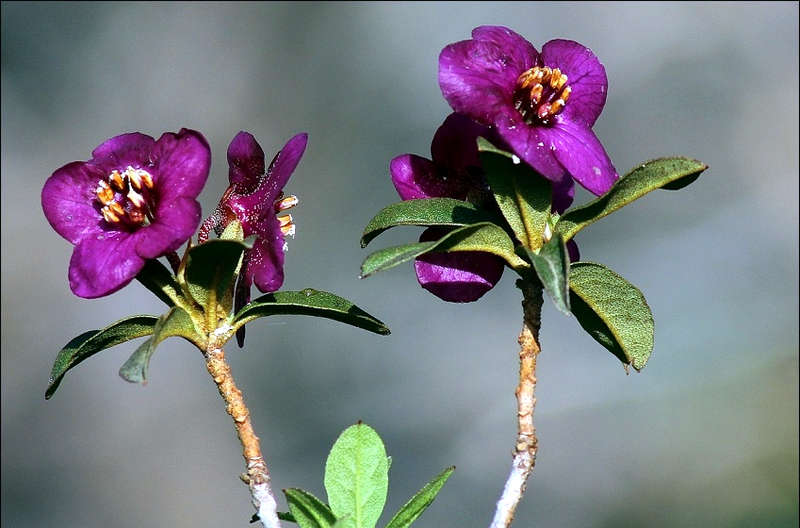
Rhodendron lepidotum (Brass)
Rhododendron lepidotum (Brass) is a small, aromatic shrub native to the high-altitude regions of the Himalayas, including the alpine zones of the Great Himalayan National Park (GHNP) in Himachal Pradesh. Often referred to locally as “Brass,” this evergreen plant is well known for its resilience, striking appearance, and strong medicinal value.
Growing at elevations between 3,000 and 4,500 meters, Rhododendron lepidotum is typically found in open alpine meadows, rocky slopes, and forest edges. Its compact form, leathery leaves, and purplish-pink or yellowish flowers make it easy to identify among other alpine flora. A distinctive feature of this species is its aromatic foliage, which emits a strong scent when crushed, often used in traditional Himalayan herbal practices.
| Local name | Brass |
| Botanical name | Rhododendron lepidotum |
| Family | Ericaceae |
| Description | It is an erect or ascending, branched, aromatic, more or less scaly-glandular shrubs, commonly found at an altitude of 2600-4200m. The leaves of this species are oblong to obovate in shape with silvery-scaly upper surface and brown – scaly lower surface. Flowers are pink purple. |
| Distribution | It is frequently found on the slopes and glacial mountains in Sainj valley. |
| Flowers & Fruits | July-September |
| Uses | It is also used as an alternative of tea, twigs are used as fuel wood by alpine visitors. |
Within GHNP, Rhododendron lepidotum (Brass) contributes significantly to the region’s rich biodiversity. It supports pollinators like bees and butterflies and serves as ground cover that helps prevent soil erosion in fragile alpine ecosystems. The plant’s ability to survive harsh climatic conditions makes it an important species for maintaining ecological balance at high altitudes.
In traditional medicine, the leaves and flowers of Rhododendron lepidotum are used for treating respiratory issues and joint pain. However, the plant contains certain toxic compounds and should only be used under guidance from experienced practitioners. Its medicinal potential continues to attract scientific interest for pharmacological studies.
Due to its sensitivity to environmental changes, Rhododendron lepidotum is increasingly vulnerable to the effects of climate change, such as rising temperatures and altered snow patterns. Conservation efforts in protected zones like GHNP are vital to safeguard this and other rare alpine species from long-term ecological threats.



